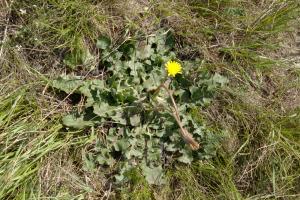Taraxacum koksaghyz Rodin, a dandelion from the steppes of south-eastern Kazakhstan, has been known for long time as potential rubber producer, as a temperate region alternative to the tropical rubber tree Hevea brasiliensis Müll. Arg.. In this work, we evaluate Taraxacum bicorne Dahlst. (wild populations), a closely related congener of T. koksaghyz.

